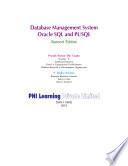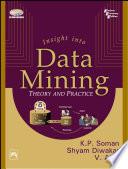
DATABASE MANAGEMENT SYSTEMS
Primarily designed for the postgraduate students of computer science, information technology, software engineering and management, this book, now in its Third Edition, continues to provide an excellent coverage of the basic concepts involved in database management systems. It provides a thorough treatment of some important topics such as data structure, data models and database design through presentation of well-defined algorithms, examples and real-life cases. A detailed coverage of Database Structure, Implementation Design, Hierarchical Database Management Systems, Network Database Management Systems and Relational Database Management Systems, is also focused in this book. This book will also be useful for B.E./B.Tech. students of Computer Science and Engineering and Software Engineering. NEW TO THIS EDITION • Introduces three new chapters on rational database languages, namely, Relational Database Management Systems: Oracle 11g SQL, Relational Database Management Systems: Oracle 11g PL/SQL, and Relational Database Management Systems: Access 2013. • Text interspersed with numerous screenshots for practical under-standing of the text. • Clearly explained procedures in a step-by-step manner with chapter-end questions. • Self-explanatory, labelled figures and tables to conceptual discussion.
- ISBN 13 : 9387472108
- ISBN 10 : 9789387472105
- Judul : DATABASE MANAGEMENT SYSTEMS
- Pengarang : PANNEERSELVAM, R.,
- Kategori : Computers
- Penerbit : PHI Learning Pvt. Ltd.
- Bahasa : en
- Tahun : 2018
- Halaman : 476
- Google Book : http://books.google.co.id/books?id=8MZGDwAAQBAJ&dq=intitle:Management+Basis+Data&hl=&source=gbs_api
-
Ketersediaan :
Primarily designed for the postgraduate students of computer science, information technology, software engineering and management, this book, now in its Third Edition, continues to provide an excellent coverage of the basic concepts ...









